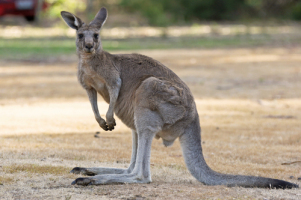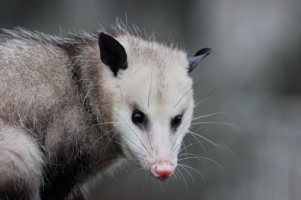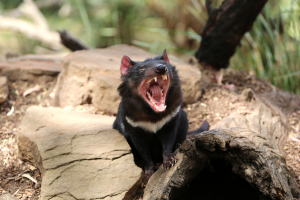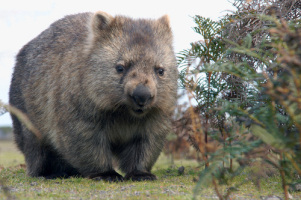By: C.A. Victor
As we look into the animal kingdom’s incredible diversity, we have to take a moment to explore one of the most intriguing types of animal out there – the marsupials! These distinctive furry vertebrates are a relatively small, fascinating group with some incredibly unique traits.

What kind of animal are marsupials?
Marsupials are one of the three types of mammals, with the other two types being placental mammals and monotremes. Mammals are a type of warm-blooded animal that nourishes their young with milk produced from the mother’s mammary glands. They are one of the five vertebrate classes (animals with a backbone): amphibians, birds, fish, mammals, and reptiles. The mammals are classified under kingdom – Animalia, phylum – Chordata, and class – Mammalia.
While not as prolific as placental mammals (which make up the largest portion of mammals by far!), the marsupials have a surprising number of species both current and within the fossil record.
What makes marsupials different from other mammals?
Marsupials share basic mammalian traits with monotremes and placental mammals. They bear live young, possess mammary glands that produce milk to feed their young, and have hair or fur. For more information about the traits that make a mammal, you can visit our article “What is a Mammal?” for further details. However, some traits set them apart from other types of mammals.
The most obvious difference between marsupials and placental mammals is the presence of a pouch. The word marsupial originates from the Latin word marsupium which means “pouch”, referring to a biological adaptation that all females of marsupial species share. This pouch is a fold of skin with a single opening that covers the animal’s mammary glands. This pouch comes into play an important part in marsupial
development.
After all, marsupials are born in a very under-developed state. Like placental mammals, they have a placenta that nourishes their young. However, it is for a much shorter period, often only a few days. They are born tiny, hairless, and blind. They most closely resemble a “climbing jellybean” at birth. Their back limbs are not fully formed at birth but their forelimbs are developed with small claws and enough strength
to pull themselves from the birth canal to the mother’s pouch. There’s nothing else quite like it in the animal kingdom.
Marsupials also have an extra pubic bone. These epipubic bones are a pair of bones protruding forward from the pelvic bone. While their original function is unknown (and thought to be a way of assisting
location by supporting thigh muscles), they exist in marsupial species as added support to the mother’s pouch. They stiffen the torso, making prolonged gestation (long pregnancies) difficult if not impossible.
Many marsupial species have fused – or webbed – digits on their hind legs. These conjoined fingers/toes are a condition called syndactyly and typically occurs between the second and third digits.

What are some examples of marsupial mammals?
The most well-known marsupial in the animal kingdom is the kangaroo. Specifically, the Red Kangaroo is the largest species of marsupial currently living on the planet. The largest Red Kangaroo on record stood
2.1 meters tall, though most males are between 1.2-1.6 (not including the length of their tails, which can add an additional meter). They weigh between 40-200 lbs, depending on sex and size.
However, there are many other marsupial species in the world! They are opossums, koalas, wallabies, and bandicoots to name just a few! There are currently at least 330 living species of marsupials on the planet!
Marsupials (members of mammalian infraclass Marsupialia) are divided into two superorders, which help classify their types and locations.
Superorder Ameridelphia. This superorder includes marsupials living in the Americas. These are approximately 93 species of opossums (order Didelphimorphia) and about 7 species of shrew opossums (order Paucituberculata).
Superorder Australidelphia. This is the much larger superorder that contains the other approximately threefourths of marsupial species! Members of this order include all the marsupials in Australia and one single species in South America. These also include all species of kangaroos, wombats, the Tasmanian Tiger, and possums.

How Do We Categorize Australian Marsupials?
Today, we can put all the Australian marsupials into three categories based on their diets.
- Dasyurids. This group is the carnivores! These meat-eating marsupials include the Tasmanian Devil, the Tasmanian Tiger, numbats, quolls, and antechinus (marsupial mice or shrews).
- Peramelemorphs. These are a group of omnivores. They are a smaller group, including bandicoots and bilbies.
- Diprotodonts. This herbivore group includes most of the well-known marsupials. These are kangaroos, wallabies, opossums, koalas, and wombats.
Where do Marsupials live?
About 234 species of marsupials can be found on the Australian continent(the mainland, Tasmania, New Guinea, and nearby islands), and about 99 species live in South and Central America, and there are two species that live in North America. There are no living marsupial species native to Europe, Africa, or Asia.

Fun Marsupial Facts
• Female marsupials have two uteruses and two vaginas. Some marsupial males have a two-headed penis.
• You can tell a marsupial female is pregnant when she begins preening her pouch – cleaning it out so it’s ready for the newborn young.
• There are over 40 species of kangaroos!
